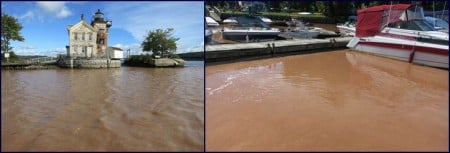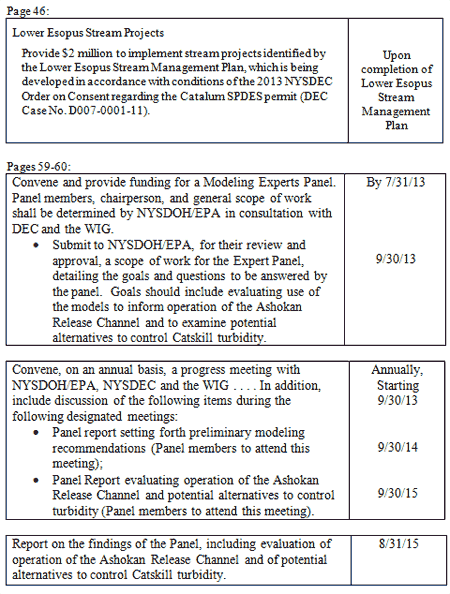Riverkeeper Calls on NYS Department of Health to Restore Measures to Protect the Lower Esopus That Were Improperly Deleted from a Key Approval at Request of New York City

View more images on our Flickr site
FOR IMMEDIATE RELEASE
Contact: Tina Posterli, 914-478-4501 x 239, [email protected]
Ossining, NY – August 29, 2013 – Days after the New York State Department of Health released a draft “Filtration Avoidance Determination (FAD)” that allows New York City to continue dumping turbid water from its reservoir system into Lower Esopus Creek, Riverkeeper has learned that two key provisions, designed to protect the Lower Esopus from such practices, had been deleted from the document at the insistence of New York City.
Following is a statement from Kate Hudson, Watershed Program Director at Riverkeeper:
“The elimination of provisions in DOH and EPA’s earlier draft FAD that would provide $2 million to address impacts of the City’s past muddy water releases to the Lower Esopus and require DEP to fund an independent study of alternatives to those releases in the future is a shocking betrayal of the public trust and of these communities by regulators who have an obligation to protect all New Yorkers, not just those who live in New York City.
This irresponsible capitulation to the City undermines confidence in the FAD revision process, because it shows that the current public comment period is simply for show and that the real deliberations took place behind closed doors before the public ever got to see the document.
New York City should not use the Lower Esopus as a dumping ground for muddy water without fear of consequence or outside oversight. And, New York State should not knuckle under to City pressure to remove key protections for this creek, which has already been severely degraded, to the detriment of the ecosystem, and to Ulster County communities and businesses. Finally, EPA, which administered the FAD process in prior years, needs to step up and assure the Lower Esopus will be protected.
Riverkeeper calls on DOH and EPA to prepare a revised draft FAD revision document which reinserts the deleted Lower Esopus provisions and release the revised draft for an additional public comment period. Anything less will allow the City to continue its practice of shifting the costs of providing clean water from its ratepayers to Upstate communities who have been given no voice in the NYC water supply decision-making process for which DOH and EPA are responsible.
The State and EPA have to decide: are they going to hold the City to the letter and spirit of the FAD and the 1997 Watershed Agreement or will they allow the City the right to make its own rules?”
###
The following passages have been deleted or substantially modified to remove references to DEP’s use of Ashokan Reservoir Release Channel discharges to the Lower Esopus Creek in order to control turbidity.* The removal of the passages relieves DEP of the requirements to provide $2 million to implement Lower Esopus stream management projects and to convene and fund an expert panel to review alternatives to Ashokan Release Channel discharges:
Page 11:
The water system facilities associated with the Ashokan Reservoir include a Release Channel, which allows water to be diverted from the reservoir to the lower Esopus Creek. The Ashokan Release Channel (ARC) has been used by the City during recent extreme storm events to help mitigate downstream flooding and, as a strategy developed through the Catskill Turbidity Control Program, to reduce the turbidity of Catskill water that reaches Kensico Reservoir. Impacts of the turbid water released during these events on the lower Esopus Creek have become a concern for residents living in the lower Esopus basin. As a condition of an Order on Consent regarding the City’s Catalum SPDES permit, NYSDEC has required the City to develop a Stream Management Plan for the lower Esopus Creek. The revised 2007 FAD requires the City to commit $2 million to support implementation of projects identified in this plan.

*Note that this list does not include all deletions and modifications made between the earlier non-public draft and the more recent publicly released draft of the 2007 FAD Mid-Term Revisions.

